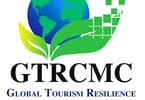Chile’s tourism industry has considerable potential to grow off a smaller base than the more mature sectors in Brazil, Mexico, and Argentina. It is very much a work in progress.
Factors in Chile’s favor include a wealth of natural attractions, some of the highest levels of personal safety and security in Latin America, a sound economy, and solid investments being made in the tourism infrastructure.
In addition to its continental territory – a narrow strip of land approximately 4,200 kilometers long on the western coastline of South America – Chile also comprises an Antarctic territory, a number of offshore islands and the enigmatic Easter Island with its mysterious statues.
Chile is well-placed to exploit the new strongly-emerging trend towards adventure holidays, eco-tourism, and the focus on sustainable development. The southern tip of Chile is, for instance, already the jumping-off point for Antarctic tours.
The government is quite supportive. It’s appropriately named “plan de accion de turismo” (plan of action for tourism) developed in conjunction with SERNATUR, the national tourism board, has the quite realistic goal to increase the number of tourists from 2.5 million in 2007 to 3.0 million in 2010.
The latest World Travel and Tourism (WTTC) report forecasts a contraction in Chile’s tourism sector this year, a consequence of the global financial crisis. It expects that after years of steady growth, the travel and tourism sector contribution to GDP will fall slightly (in local currency terms) form CLP4,205mn (US$8,048) in 2008 to CLP4.179 (US$6,810) in 2009. WTTC expects the industry to grow again after the downturn and to reach CLP8,166 (US$10,930) in 2019.
Direct employment in the sector in 2009 will be 118,700. Including employment in indirect, supporting sectors, the tourism industry represents 302,500 jobs, or 4.6 percent of total employment in Chile.
At present, just one in three visitors arrive by air. The larger number travel overland. While some are tourists from outside Latin America traveling through several countries in the region, most are residents of the neighboring countries. In the current economic climate, this is not a bad thing since it has insulated the Chilean industry at least somewhat from the global downturn.
The growth potential for the industry, however, lies principally in drawing tourists from outside the region. Some of the more prominent recent developments are the substantial investments by hotel groups and resorts in different regions of Chile, tour operators, and casino resorts. New legislation has been passed allowing up to three casinos per region – for the 15 regions in Chile. The rising level of investment stems in part from a substantial measure of international confidence in the Chilean government.
Substantial investment programs are also under way in the country’s ski resorts around the capital, Santiago, at Portillo, Valle Nevado, Farellones, La Parva, and El Colorado, and in the southern resorts, particularly Termas de Chillan. In the coastal tourism destinations, Vina del Mar has been transformed by the construction of luxurious apartment buildings along its beaches and by other resorts in the coastal area between Rocas de Santo Domingo and Algarrobo. In the North, La Serena and San Pedro de Atacama have also received huge investments in recent years.
A new sector to watch is the veritable boom in special-interest tourism. Outdoors activities, wine tours, fishing, whale watching, eco-tourism, and gaming are all benefitting from government encouragement and growth. Given attractive incentives for investment in tourism, and the sound financial and business environment in the country, it is expected that the future development of tourism investment projects for areas such as Patagonia, Chiloe Island, Vina del Mar, La Serena, and San Pedro de Atacama will continue to expand to cater to international tourists, as well as internal visitors.
www.bharatbook.com
WHAT TO TAKE AWAY FROM THIS ARTICLE:
- Given attractive incentives for investment in tourism, and the sound financial and business environment in the country, it is expected that the future development of tourism investment projects for areas such as Patagonia, Chiloe Island, Vina del Mar, La Serena, and San Pedro de Atacama will continue to expand to cater to international tourists, as well as internal visitors.
- Factors in Chile’s favor include a wealth of natural attractions, some of the highest levels of personal safety and security in Latin America, a sound economy, and solid investments being made in the tourism infrastructure.
- Substantial investment programs are also under way in the country’s ski resorts around the capital, Santiago, at Portillo, Valle Nevado, Farellones, La Parva, and El Colorado, and in the southern resorts, particularly Termas de Chillan.






















